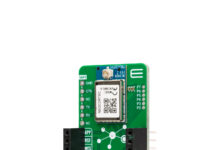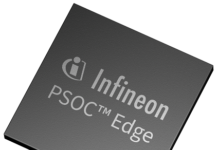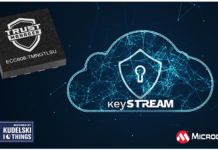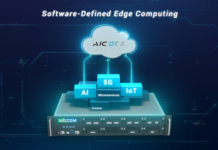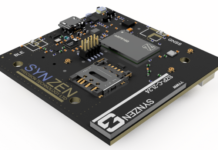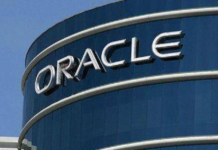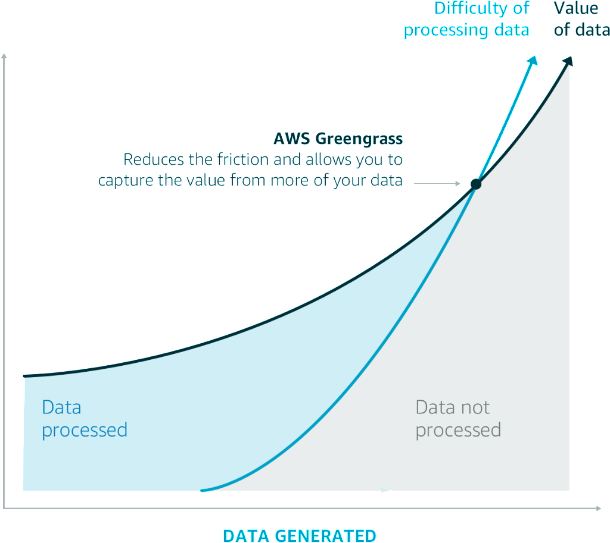
Connectivity isn’t a constant and it’s not cheap. While consumers might be willing to trade the reliability of analog systems such as a land line for the slightly less reliable cell phone, enterprises and industrial conglomerates are not.
That’s why Amazon Web Service unveiled a new product in Las Vegas last week called Greengrass aimed at linking edge devices to Amazon’s cloud-based web services. A device running AWS Greengrass core will likely be a heftier gateway device that sits inside a building, a truck or a home and connects with other sensors or devices in the building.
Greengrass allows companies to track state and offer on-device analytics. Plus, it lets devices that use the AWS IoT Device SDK communicate with the device that hosts the AWS Greengrass core without connecting back to the cloud.
Amazon’s Werner Vogels, who is the CTO of AWS, explained it well in his blog on the launch:
“As it turns out, there are three broad reasons that local data processing is important, in addition to cloud-based processing. At AWS we refer to these broad reasons as “laws” because we expect them to hold even as technology improves:
- Law of Physics. Customers want to build applications that make the most interactive and critical decisions locally, such as safety-critical control. This is determined by basic laws of physics: it takes time to send data to the cloud, and networks don’t have 100% availability. Customers in physically remote environments, such as mining and agriculture, are more affected by these issues.
- Law of Economics. In many industries, data production has grown more quickly than bandwidth, and much of this data is low value. Local aggregation and filtering of data allows customers to send only high-value data to the cloud for storage and analysis.
- Law of the Land. In some industries, customers have regulatory or compliance requirements to isolate or duplicate data in particular locations. Some governments impose data sovereignty restrictions on where data may be stored and processed.
Today, we are announcing the general availability of AWS Greengrass, a new service that helps unlock the value of data from devices that are subject to the three laws described above.”
This is a good move for Amazon that extends its cloud computing efforts beyond its own data centers and validates the concept of edge computing.
Cisco has been talking about this for at least five years as “fog computing” while Microsoft recently launched a similar edge-to-cloud program called Azure IoT Edge. Other big IT shops are offering similar products, such as HPE’s ruggedized Edgeline servers that have up to 64 Xeon cores for data analytics or Dell’s efforts to build a community around EdgeX Foundry.
There are a few things to keep an eye on from a business perspective.
Later, if a company wants set up a model of the factory at a given point in time based on that data, it has the tools.
The second thing to watch here is the pricing. Amazon prices many of its services based on consumption. But when you are installing software on edge devices, the model is generally based on a license per unit. Look to see how Amazon adapts pricing for that market, or if the market adapts to more of a consumption model. For now AWS is charging a per device fee on the first 10,000 devices, but large-scale customers will likely have many more devices than that.
Finally, look for startups offering tools to make the management between Amazon’s serverless computing platform called Lambda and Greengrass work. There’s a huge opportunity for better monitoring of these systems and making it easier to set them up.
For example, Ayla Networks, a startup that offers a hosted IoT platform to customers such as Fujitsu and Hunter Fan Co., built its cloud services on AWS. Now, it can extend its offering to industrial minded clients who need a gateway to manage local processing and events.
Bill Podrasky, VP of global business development at Ayla, explains that while some customers can build a platform themselves on AWS’ platform, there are plenty of customers that want something much easier to consume. He too, is curious about that pricing.
Source: staceyoniot.com



